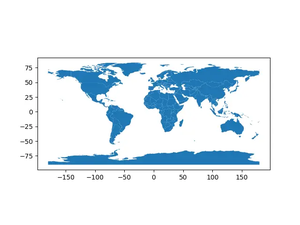Pandas is a powerful tool for data analysis and manipulation in Python, one of its key features is handling time series data. Converting strings to datetime is a common operation, and this tutorial will guide you through converting a column of ISO date strings to datetime format in Pandas DataFrames.
Introduction to Pandas and Datetime
Before diving into the conversions, it’s important to understand what Pandas and the datetime format are. Pandas is an open-source, BSD-licensed library providing high-performance, easy-to-use data structures and data analysis tools for the Python programming language. On the other hand, datetime is a Python module which supplies classes for manipulating dates and times.
When working with time series data, it’s crucial to ensure your date/time information is in the right format to perform time-based calculations and visualizations accurately. We’ll start with simple conversion methods and gradually dive into more advanced usage scenarios.
Basic Conversion
First, let’s import Pandas and create a DataFrame with a column of ISO date strings.
import pandas as pd
df = pd.DataFrame({
'ISO_dates': ['2021-01-01', '2021-02-01', '2021-03-01']
})
print(df)To convert this column to datetime, use the pd.to_datetime() function.
df['ISO_dates_converted'] = pd.to_datetime(df['ISO_dates'])
print(df)The output shows the original ISO date strings alongside their converted datetime equivalents:
ISO_dates ISO_dates_converted
0 2021-01-01 2021-01-01
1 2021-02-01 2021-02-01
2 2021-03-01 2021-03-01Formatting Options
In many instances, your date strings might not be in ISO format or you might need a specific datetime format. Pandas’ to_datetime() function is quite flexible and allows you to specify a format.
df['ISO_dates_format'] = pd.to_datetime(df['ISO_dates'], format='%Y-%m-%d')
print(df)This step explicitly sets the format, though in the case of ISO standard dates, Pandas usually automatically detects and converts them correctly.
Error Handling
Sometimes, you’ll encounter strings that cannot be converted into datetime objects. Pandas provides parameters to handle such scenarios gracefully.
try:
df['ISO_dates_error'] = pd.to_datetime(df['ISO_dates'], errors='raise')
except ValueError as e:
print(f'Error: {e}')
# Using `errors='coerce'` will replace errors with NaT
# `errors='ignore'` will return the original input
Understanding how to handle errors is essential for maintaining the integrity of your data.
Advanced Use Cases
As you become more comfortable with basic conversions, you may find the need to work more closely with timezones, perform operations between different time points, or manipulate the datetime objects further.
Working with Timezones
Converting ISO date strings to datetime objects and specifying a timezone can be achieved like this:
df['ISO_dates_timezone'] = pd.to_datetime(df['ISO_dates']).dt.tz_localize('UTC').dt.tz_convert('America/New_York')
print(df)This code converts the dates to UTC timezone first, then to the desired timezone (‘America/New_York’ in this example). Managing time zones is particularly helpful in global applications.
Difference Between Dates
Calculating the difference between dates, or duration, is another useful application. Here’s how to do it:
df['Duration'] = df['ISO_dates_converted'] - pd.to_datetime('2020-12-31')
print(df)This calculation subtracts a specific date from each date in the ‘ISO_dates_converted’ column, demonstrating how to work with durations and date differences effectively.
Conclusion
In summary, converting ISO date strings to datetime format in Pandas DataFrames is a straightforward task that can be adapted for more complex data manipulation requirements, such as working with timezones or calculating durations. With these techniques, you’re well-equipped to handle time series data more efficiently and accurately in your Python data analysis projects.
